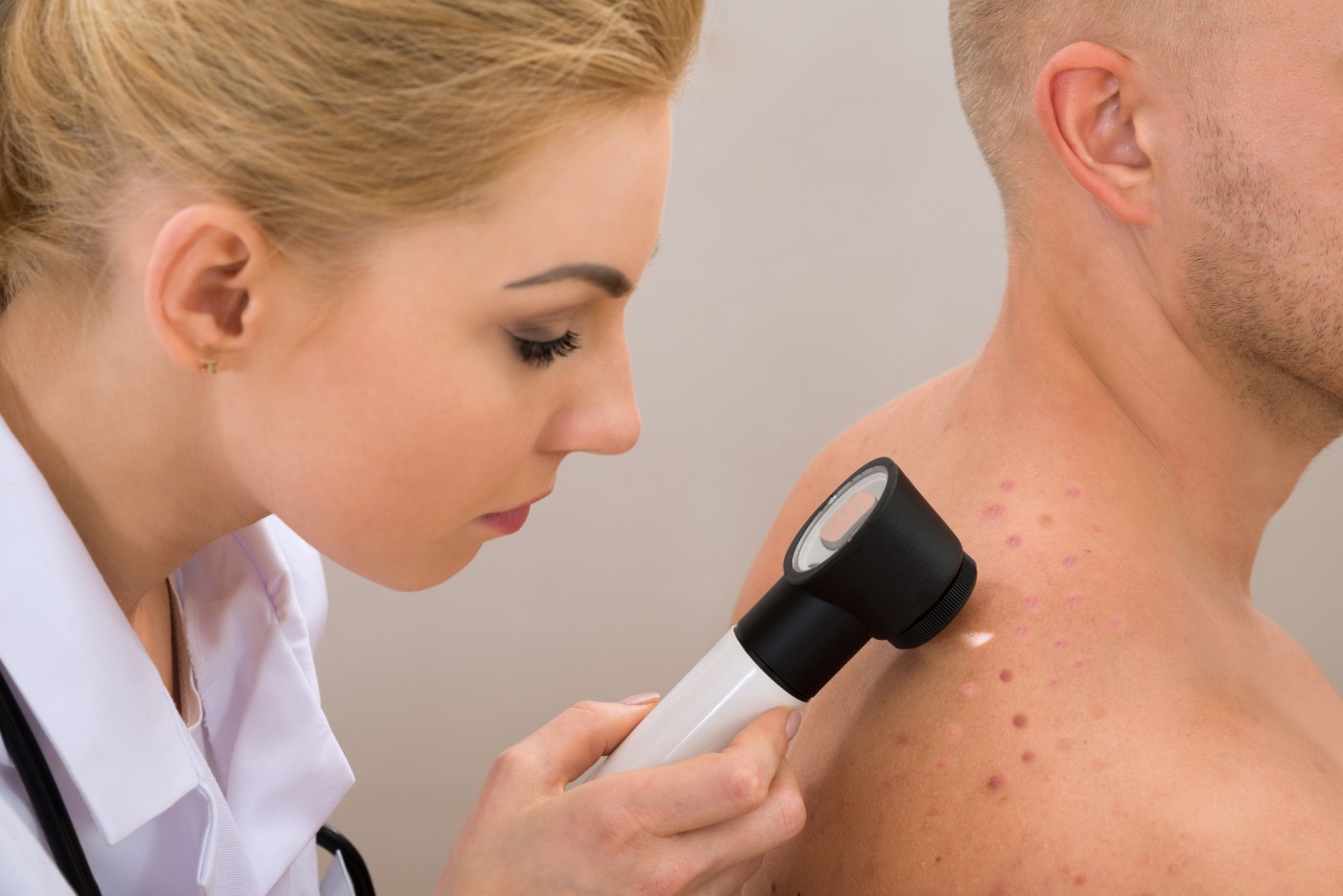When it comes to predicting risk for skin cancer, many of us, including physicians, believe having more than 50 moles puts one at a much higher risk of developing melanoma. What most people fail to recognize is that there is still a need to be wary of skin cancer even with less than 50 moles. According to a recently presented study during the American Academy of Dermatology’s 2015 Summer Academy Meeting held in New York, individuals with fewer moles may be diagnosed with more aggressive melanoma than those with a higher number of moles. The study was led and presented by Caroline C. Kim, MD, FAAD, director, pigmented lesion clinic, and associate director of the cutaneous oncology program, Beth Israel Deaconess Medical Center Department of Dermatology, Harvard Medical School, Boston.
Dr. Kim explained that while patients with more than 50 moles were more compliant with regular dermatologist consultations and skin cancer screenings, most of her patients undergoing treatment for advanced-stage melanoma had fewer moles. To find out whether there was a correlation between the severity of the disease and the number of moles, Dr. Kim and a team of researchers analyzed 281 patient charts between 2013 and 2014. They listed 89 patients who had more than 50 moles and 192 who had fewer.
Dr. Kim’s findings confirmed her suspicion when patients that had fewer moles were found to have thicker, more aggressive melanoma, while the converse was true for those with more than 50 moles and with atypical moles. She also noted that patients with more than 50 moles tended to receive a melanoma diagnosis at a younger age.
This discovery poses several implications and could be linked to a number of factors. For example, having more moles leads to earlier, more frequent clinic visits and screening tests, contributing to an earlier and more manageable melanoma diagnosis. While healthcare providers should still alert patients who have many moles of their predisposition to develop skin cancer, those with fewer moles should receive similar advice and attention.
Dr. Kim also noted there exists biological differences between the two groups of patients, which may play a role in the variations of melanoma they tend to develop. “We already know that melanomas are not all the same genetically,” she said. “It’s possible that there are different pathways that drive melanoma in these two patient groups, resulting in different degrees of aggressiveness. If patients with fewer moles are more prone to aggressive melanoma, then we need to make sure that they are also being educated and screened, in addition to patients with many moles.”
She explained that her findings will need to be further strengthened and confirmed by larger scale studies, searching for the biological differences between those with many and few moles. “It’s important to educate yourself about skin cancer, no matter how many moles you have,” Dr. Kim said. “All skin cancers, including melanoma, are most treatable when they’re detected early, so it’s important to be aware of warning signs on your skin.”
The American Academy of Dermatology recommends conducting regular self-exams to check the skin for suspicious spots, including any moles that exhibit any of the ABCDEs of melanoma:
- Asymmetry: One half of the mole is unlike the other.
- Border: The mole’s border is irregular, scalloped or poorly defined
- Color: The color of the mole varies from one area to another.
- Diameter: The mole’s diameter is larger than 6 mm (the size of a pencil eraser).
- Evolving: The mole’s size, shape or color changes over time.
“Watch for ‘ugly duckling’ skin lesions that look out of place, whether they are dark-colored, or pink or skin-colored,” Dr. Kim says. “Any unusual or changing lesion should be examined by a board-certified dermatologist.”


